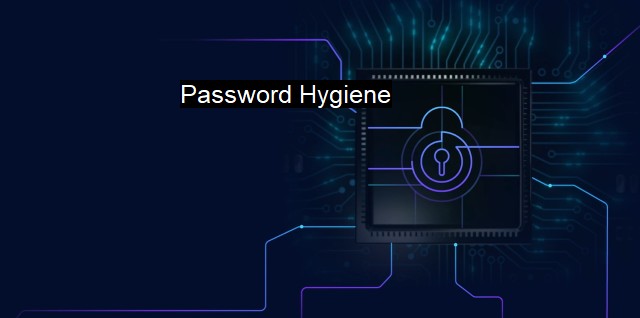What is Password Hygiene?
Mastering Password Hygiene: The Key to Securing Sensitive Information in Digital Devices
In the spectrum of cybersecurity and antivirus protection, password hygiene emerges as one of the critical topics. It comprises practices and procedures implemented by individuals to maintain and manage their passwords in a secure and healthy manner, rendering their digital assets less prone to unauthorized access and hacking attempts. Thus, good password hygiene is indispensable to creating a loophole-free cyber world, where pernicious entanglements with cyber-attackers can be kept at bay.A common misconception is that password hygiene merely relates to creating unique passwords; in reality, it reaches far beyond. It is an expansive concept that includes aspects such as frequent password updates, secure storage of passwords, use of different passwords across different platforms, and application of multi-factor authentication processes. password hygiene centers on developing a systematic yet unpredictable password environment, obfuscating any potential cybercriminal’s efforts to breach the user’s protective digital walls.
One of the most fundamental aspects of good password hygiene is formulating a strong and secure password. Weak passwords are an open invitation to hackers. Therefore, passwords must be complex, mixing numeric symbols, alphabets, and alphanumeric characters, with no correlate to personal information. Grammatical structuring also contributes to the password's strength. entire phrases, meaningful in context yet random to outsiders, can be of profound effect.
Good password hygiene also calls for having distinct passwords for every site or application you use. Using the same password across multiple platforms endangers you to a massive-scale breach if any one of those facades gets compromised. Thus, diversification in password creation is presently seen as a non-negotiable element in maintaining robust password hygiene.
Practising regular password changes is another substantial facet of password hygiene. The longer a password exists, the more likely it is for that password to fall into the wrong hands, making periodic updation a necessity. such changes must also observe thoughtful randomness to avoid recognizable patterns that could be decoded by hackers.
Undoubtedly, managing all passwords of multiple accounts can be daunting, leading us to another salient dimension of password hygiene: secure password management. Digital assets such as password managers that can safely store and auto-fill passwords are beneficial tools that can strongly aid users in maintaining their password hygiene.
Beyond these, utilizing multi-factor authentication processes bolsters the efficacy of password hygiene practices. Two-factor or multi-factor authentication adds an extra layer of protection serving as a double check by requiring a secondary piece of information after the initial password is entered.
While personal diligence is urged, organizations too have a vital role in promoting good password hygiene. Encouraging employees to change passwords periodically, not use the same password for multiple logins, and offering secure storage options and training on password management are important steps organizations can take. Enterprises can also leverage advanced tools and technologies to enforce password policies effectively.
In an era when cybercrimes have augmented, having antivirus software alone is insufficient. Alongside, good password hygiene is a critical shield every individual and organization must employ to protect their digital life from being mishandled by ill-intentioned cybercriminals. Employing the correct foundations of generating passwords, storing them securely, and ensuring regular updates are practical yet efficient steps towards optimum cybersecurity.
Good password hygiene refers not only to the creation of strong, unique passwords but also to the comprehensive management of these passwords to avoid cybercrimes and maintain the user's digital security. focusing on efficient password hygiene can be an effective defense against the onslaught of cyber frauds and breaches. Remember that cybersecurity is only as strong as its weakest link. Today, that weakest link is often poor password hygiene, making it a pivotal factor in securing our increasingly digital world.

Password Hygiene FAQs
What is password hygiene and why is it important for cybersecurity?
Password hygiene is a set of practices that help users create and maintain strong and secure passwords. It is important for cybersecurity because weak passwords can be easily guessed or cracked by hackers, which can compromise the security of personal and sensitive information.What are some tips for creating and maintaining strong and secure passwords?
Some tips for creating and maintaining strong and secure passwords include using a combination of upper and lowercase letters, numbers, and symbols, avoiding using predictable patterns or easily guessable information, not reusing passwords across different accounts, and updating passwords regularly.How can antivirus software help improve password hygiene?
Antivirus software can help improve password hygiene by detecting and blocking malicious software, such as keyloggers or phishing attempts, that could compromise the security of passwords. Additionally, some antivirus programs offer password managers that can generate and store strong passwords, making it easier for users to create and maintain secure passwords across different accounts.What are some consequences of poor password hygiene?
Some consequences of poor password hygiene include unauthorized access to personal or sensitive information, identity theft, financial loss, and damage to reputation. In some cases, poor password hygiene can also lead to the spread of malware or other malicious software, which can affect not only the user's own device but also other devices on the network.| | A | | | B | | | C | | | D | | | E | | | F | | | G | | | H | | | I | | | J | | | K | | | L | | | M | |
| | N | | | O | | | P | | | Q | | | R | | | S | | | T | | | U | | | V | | | W | | | X | | | Y | | | Z | |
| | 1 | | | 2 | | | 3 | | | 4 | | | 7 | | | 8 | | |||||||